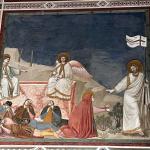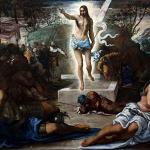Responding to NT Wright’s response to the critics of his resurrection book, John Dominic Crossan registered three agreements and three points in what he called an amicus curiae brief. The agreements:
1) “Resurrection” means the general bodily resurrection. To say Jesus is raised is to say that the general bodily resurrection has begun. Resurrection is about the eschaton breaking in. The eschaton is God’s “spring cleaning” of the world, and thus must necessarily have to do with bodies. Martyrs are destroyed bodily, and their vindication must be equally bodily.
2) Resurrection means creation is transformed, that God is not going to destroy the earth.
3) This is all a frontal attack on Caesar’s claims to lordship, though Christ’s lordship takes a different form from Caesar’s. For Caesar, victory was the condition of peace. For Christ, justice is the condition of peace.
The disagreements:
1) Crossan wants to make more of the harrowing of hell as a necessary aspect of God’s estblishment of justice in the resurrection. If Jesus rises alone, leaving all those unjustly martyred in the tomb, justice is not done.
2) In place of Wright’s “two-stage” resurrection, Crossan wants to talk about the beginning of a process. Resurrection means that a process of renewal of the creation is already begun, and that we are called to be participants in this process. This is an innovation in the tradition, according to Crossan. (This isn’t right; Noah too is called to be a participant in the process of renewal of the creation.)
3) The key to resurrection faith is not simply Jesus’ appearances + the empty tomb. Rather, Jesus prepared the disciples for the inbreaking of the eschaton in the resurrection by announcing during his lifetime that the kingdom had already begun.
All this, however, comes along with Crossan’s refusal to affirm that the tomb was empty, and his consistent claim that Jesus’ appearances were “apparitions.” As Wright correctly pointed out, the NT itself shows awareness of the distinction between apparitions and bodily appearances, and never describes the resurrection as an apparition.















